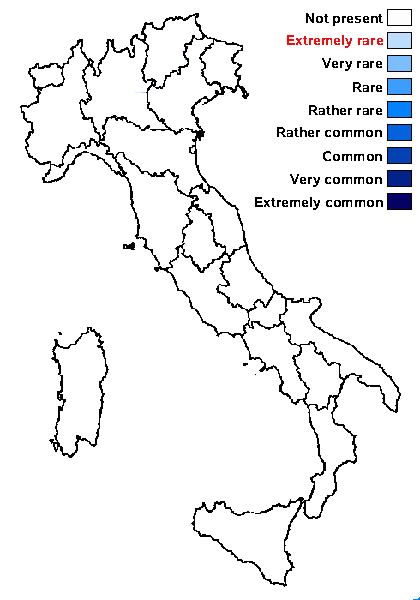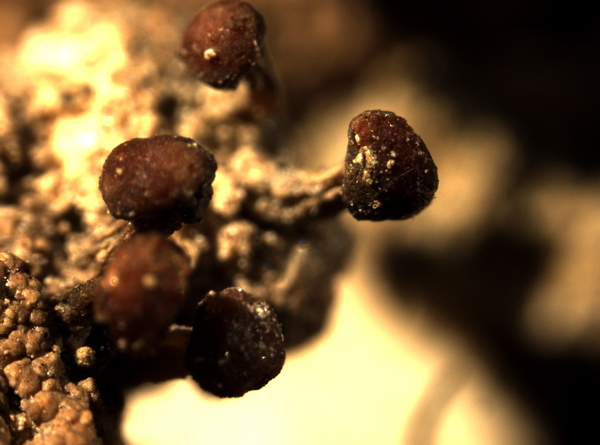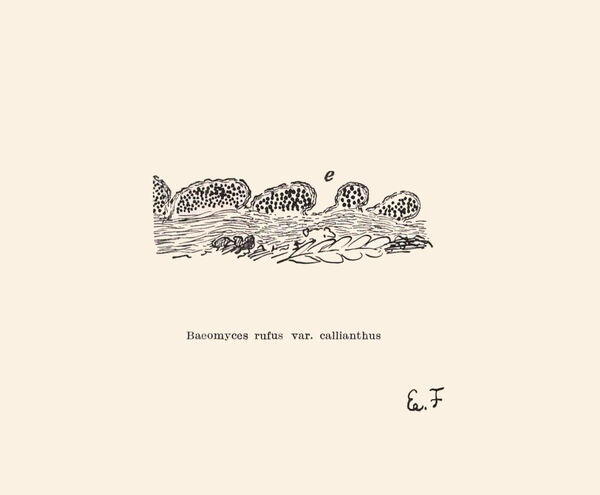Baeomyces callianthus Lettau
Hedwigia, 52, 3-4: 160, 1912.
Synonyms:
Distribution:
Description: Primary thallus minutely squamulose, the squamules 0.3-0.5 mm wide, crenulate, more or less contiguous, grey-green to greenish white, often powdery-sorediate, the soredia greenish grey. Apothecia frequent, without a thalline margin, with a pink, flat to slightly convex disc, the margins often paler, up to 2 mm across, single or 4-8 and coalescing, terminal, brought on erect, subfruticose, smooth, flattened to subcylindrical, simple or branched, white stipes which are 1-2(-3) mm tall. Epithecium pale reddish brown, K+ orange then blood-red; hymenium colourless, K/I-; paraphyses simple to sparingly branched in upper part, slender, 1-1.8 µm thick, the apical cell only slightly wider; hypothecium pale. Asci 8-spored, cylindrical, thin-walled, the apex truncated, with a single functional wall layer, with a poorly differentiated, non-amyloid tholus. Ascospores 1(-2)-celled, hyaline, fusiform, 10-17 x 3-5 μm. Pycnidia rare. Conidia bacilliform. Photobiont chlorococcoid. Spot tests: thallus K+ yellow, C-, KC+ yellow, P+ orange-yellow, UV-; disc of apothecia K+ orange, then blood-red. Chemistry: stictic acid, in thallus, norstictic and constictic acids in apothecia.Note: a rare species with a Central European distribution, growing on acid soil, on acid soil, more rarely on stumps or encrusting bryophytes, in rather humid situations, with several stations in the Eastern Alps (Austria); perhaps just a chemical variety of B. rufus. To be looked for in Italy.
Growth form: Fruticose
Substrata: soil, terricolous mosses, and plant debris
Photobiont: green algae other than Trentepohlia
Reproductive strategy: mainly sexual
Poorly known taxon in need of further study

Predictive model
Growth form: Fruticose
Substrata: soil, terricolous mosses, and plant debris
Photobiont: green algae other than Trentepohlia
Reproductive strategy: mainly sexual
Poorly known taxon in need of further study

Predictive model
 Index Fungorum
Index Fungorum
 GBIF
GBIF



